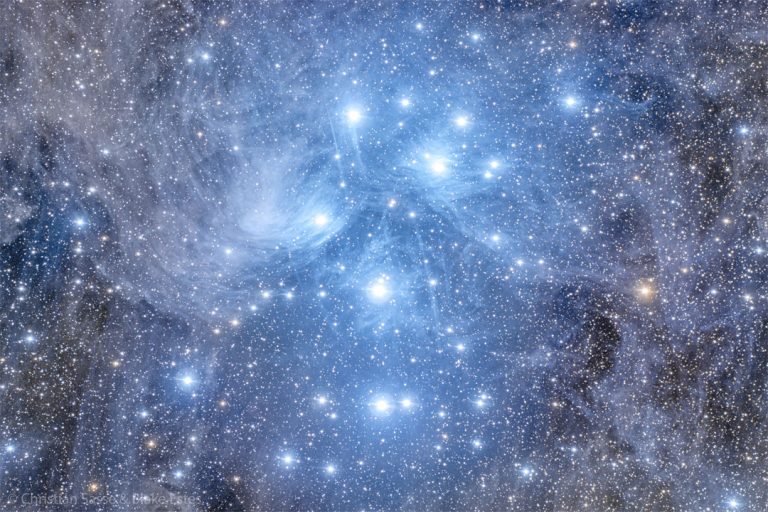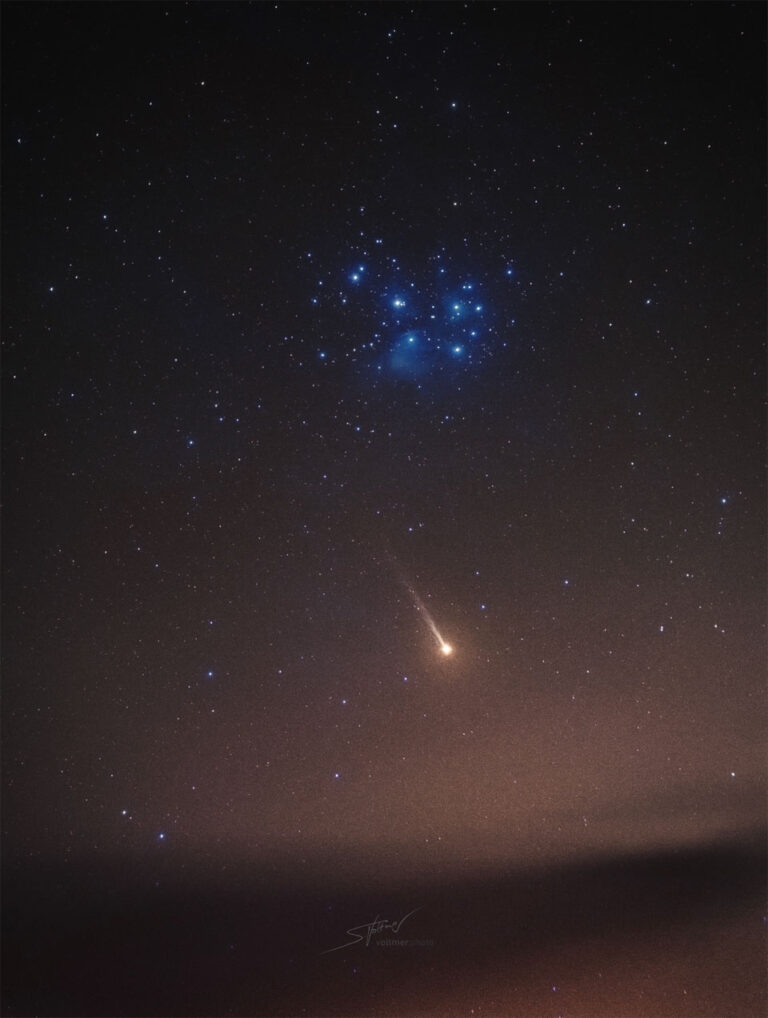满是尘埃的昴宿星团
A famous Pleiades star cluster is shown but showing numerous parallel and curved filaments in different colors. The image is in several colors of infrared light. A rollover image shows the cluster in visible light with its familiar blue light. Please see the explanation for more detailed information.
图中显示的是著名的昴宿星团,但呈现出不同颜色的无数平行和弯曲的丝缕状结构。该图像采用多种颜色的红外光。翻转图像显示的是可见光下的昴宿星团,并带有我们熟悉的蓝光。 有关更多详细信息,请参阅说明。




